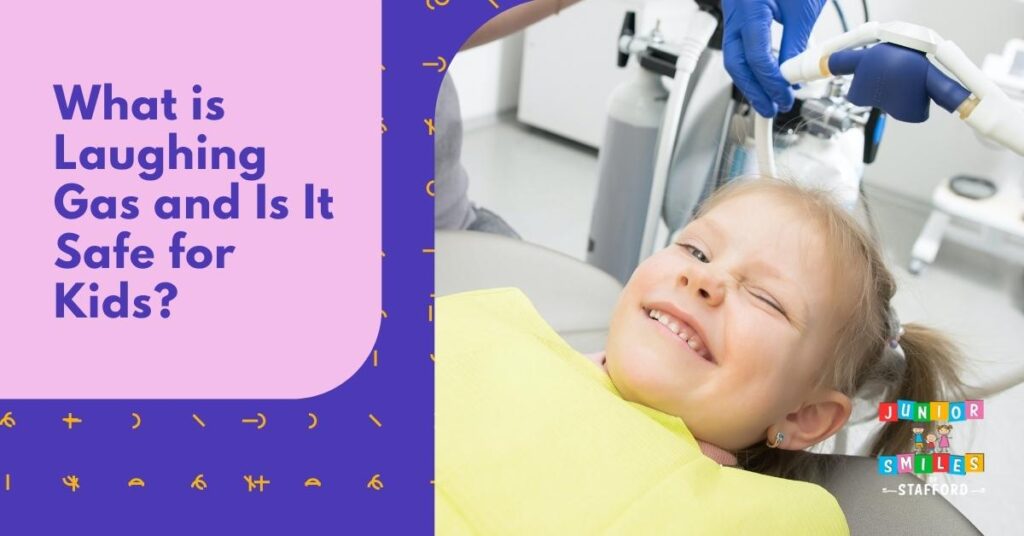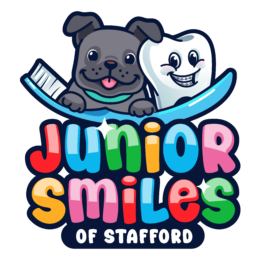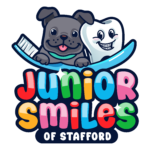Laughing Gas for Kids: Understanding Sedation in Pediatric Dentistry

Kids might get nervous or anxious just thinking about going to the dentist, and they’ll probably freak out if they have to undergo a procedure they’ve never had before. The good news is that dental offices often provide sedation options to help apprehensive children relax and get through their procedures more easily.
In terms of sedative procedures, laughing gas is among the most dependable and secure options. Patients of all ages can benefit from this as it makes them more comfortable during dental treatments. You have found the correct spot if you have ever wondered whether this approach is safe for your child. Let’s dive into the topic of laughing gas in this blog article. We’ll cover its definition, potential side effects, and if it’s safe for kids, particularly when compared to alternative sedative options.
What is Laughing Gas?
Nitrous oxide, also known as laughing gas, is a combination of the gasses oxygen and nitrogen. This type of gas does not have any discernible smell or color. This gas is the most popular and most accessible type of sedation for pediatric patients, and it’s also completely safe for kids. While the operation is underway, a mask is used to give nitrous oxide. The dentist may still access the child’s teeth while the mask covers just their nose. Kids can then unwind while remaining alert because the effects are subtle. The effects of the gas will also rapidly start to wear off as the mask is removed.
How Does Laughing Gas Work for Dental Sedation?
Laughing gas, also known scientifically as nitrous oxide, is a popular method used in sedation dentistry for children and adults alike. Its working mechanism is straightforward yet highly effective. When inhaled, laughing gas induces a state of relaxation and pain reduction. This makes it particularly useful in procedures like tooth extraction or treating cavities. Unlike other sedation methods, nitrous oxide has the advantage of offering a rapid onset of sedation, with effects typically felt within minutes. Additionally, its effects are reversible, and patients generally recover quickly, reducing downtime post-treatment. This aspect makes nitrous oxide a preferred choice in pediatric dentistry, especially when treating young patients who may be anxious or fearful about dental procedures. While laughing gas is widely considered safe, it’s important for dentists to monitor nitrous oxide side effects in children closely to ensure a comfortable and safe experience.
Is Laughing Gas Safe for Kids?
When it comes to children’s dental care, this method has the stamp of approval from the American Academy of Pediatric Dentistry. The gas is easy to inhale, has no addictive properties, and is rapidly expelled from the body while breathing normally. If your kid inhales laughing gas, they may experience dizziness or a heaviness in their limbs. Nevertheless, these side effects are common responses to the laughing gas and go away nearly as soon as they take off their breathing mask. Inhaling the laughing gas can put your youngster at ease and make them feel safe.
Side Effects of Laughing Gas for Kids
Laughing gas, commonly used in pediatric dentistry, is generally considered safe, but like any medical treatment, it can have side effects, particularly in children. It’s essential for parents and caregivers to be aware of these potential side effects to better prepare and manage them if they occur.
Nausea and Vomiting
One of the most common side effects in children after using laughing gas is nausea and vomiting. This usually occurs if the child has eaten a heavy meal before the dental procedure. To minimize this risk, it’s recommended that children eat only a light meal a few hours before receiving laughing gas.
Dizziness
Children may also experience dizziness after inhaling nitrous oxide. This sensation can be disorienting and may cause unease or fear, especially in younger patients. Parents should be prepared to support their child post-procedure until this side effect subsides, which typically happens soon after the gas is turned off.
Headaches
Headaches are another side effect that some children might experience after being administered laughing gas. These headaches can range from mild to moderate and usually resolve within a few hours after the procedure. Ensuring the child rests in a quiet environment can help alleviate this discomfort.
Fatigue
Fatigue or tiredness is another possible side effect of laughing gas in pediatric patients. After the dental procedure, children might feel unusually sleepy or lethargic. It’s important for them to rest after the treatment to allow the body to recover fully.
Disorientation
Some children might experience a sense of disorientation or confusion after inhaling nitrous oxide. While this is typically short-lived, it can be unsettling. Parents and dental staff should offer reassurance and a calm environment to help the child through these feelings.
Laughing Gas vs Other Forms of Sedation
Compared to other forms of sedation, laughing gas is known for its safety and minimal side effects. It works quickly, inducing a state of relaxation and pain relief within minutes, and its effects wear off just as fast once the gas is discontinued. This quick recovery time means children can return to their normal activities soon after the procedure. In contrast, other sedation methods like oral sedatives or IV sedation can have longer-lasting effects, requiring more time for recovery and observation. Oral sedatives might take longer to take effect and can sometimes lead to deeper sedation than intended, while IV sedation is more invasive and typically reserved for longer or more complex procedures. Laughing gas is particularly favored for its ability to reduce anxiety and discomfort during short, simple procedures, making it a preferred choice for pediatric care.
Laughing Gas for Kids FAQs
How long does laughing gas last for a child?
Laughing gas, when administered to a child, typically lasts only as long as the gas is being inhaled. Its effects are fast-acting, usually beginning within a few minutes of inhalation. The duration of its impact is directly tied to the length of administration; once the gas is stopped, its effects wear off quickly, often within a few minutes. This rapid offset is a significant advantage in pediatric care, as it allows children to return to their normal activities soon after the procedure without prolonged drowsiness or other lingering effects.
Can you still feel pain with laughing gas?
While laughing gas does not eliminate pain completely, it significantly reduces pain perception and increases pain threshold in children. Nitrous oxide, the main component of laughing gas, is a mild anesthetic that provides analgesic effects, meaning it can relieve pain to a certain extent. It’s most effective in reducing anxiety and creating a sense of relaxation, which can make the child less aware of and responsive to pain. However, in most dental and medical procedures, laughing gas is used in combination with a local anesthetic, which numbs the specific area being treated to ensure the child feels no pain during the procedure.
Does laughing gas make kids sleepy?
Laughing gas does not typically make children sleepy, but it induces a state of relaxation and a feeling of well-being. Some children might feel a bit drowsy or light-headed while inhaling nitrous oxide, but it doesn’t usually cause deep sleep or significant sedation. The primary purpose of laughing gas in pediatric care is to reduce anxiety and make the child more comfortable during medical or dental procedures. Its effects are mild and easily controlled, allowing for a quick return to normalcy once the procedure and the administration of the gas are completed.
Visit Junior Smiles of Stafford for Compassionate Pediatric Dental Care
In conclusion, laughing gas, or nitrous oxide, emerges as a highly beneficial and safe option for pediatric dental care. Its ability to alleviate anxiety and discomfort, coupled with its minimal side effects, makes it an excellent choice for children undergoing dental procedures. The fast-acting nature and quick recovery time ensure that children can resume their daily activities without delay, providing peace of mind for both parents and children.
At Junior Smiles of Stafford, we prioritize your child’s comfort and safety, employing the best practices in pediatric dentistry. Our experienced team is dedicated to creating a positive and reassuring environment, making dental visits a stress-free experience for your child. Don’t let dental anxiety hinder your child’s oral health. Contact us today to schedule an appointment and experience the difference at Junior Smiles of Stafford, where every child’s smile matters!

